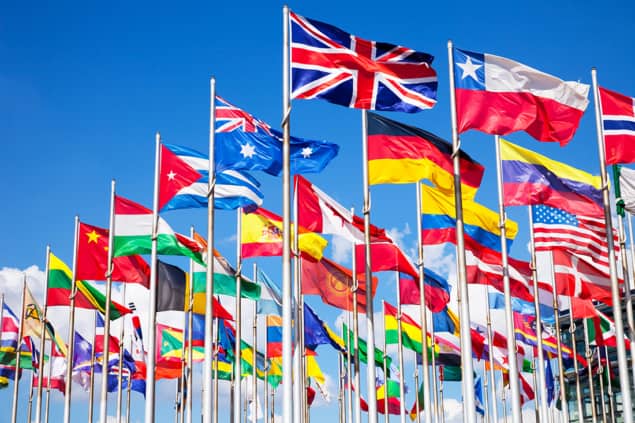
The US’s dominance in scooping Nobel prizes for work in the natural sciences could be nearing an end, according to a new analysis of previous winners. Carried out by physicist Claudius Gros from the Goethe University in Frankfurt, Germany, it also finds that the UK has won the most Nobel prizes per capita, with Germany coming second and the US a close third (R. Soc. Open Sci. 5 180167).
Since they were first awarded in 1901, scientists who are nationals of the US, the UK, Germany and France have won the most Nobel prizes in physics, chemistry, and physiology or medicine. Around 120 laureates have been American, 40 British, 40 German and 20 French. To determine Nobel-prize productivity, however, Gros factored out population size, particularly given that the US population has more than quadrupled from 76 million in 1901 to 327 million today.
On a per capita basis, the US’s era is definitively coming to an end
Claudius Gros
Gros found that the US’s productivity peaked in 1972 at 0.83 Nobel prizes per year and per 100 million inhabitants. He says that the most striking element of the US data is the continued downward trend. Since 1972 its success rate has fallen by 60% to 0.34 Nobel prizes per year and per 100 million inhabitants, and it is still dropping. “On a per capita basis, the US’s era is definitively coming to an end,” Gros told Physics World. “Within 12 years the US science Nobel prizes productivity should fall by another 50%.”
Falling returns
Gros claims that the drop in the US’s productivity could be explained by falling interest in science – evidenced by decreasing number of US students in science PhD programmes and the increasing number of non-US faculties – or the county’s dominance in fields not covered by Nobel prizes. “It may be that the US realized that sciences like physics are mature research fields that have accumulated a vast body of knowledge,” says Gros. “That would imply that the return per dollar is falling and that it would make sense to invest into more promising fields, like artificial intelligence, where the US is leading.”
As for the UK, it has maintained a very consistent rate of awards during the prize’s history – except for a brief dip in the mid-1990s – maintaining a success rate of around 0.98 science medals per year and per 100 million inhabitants. Germany and France’s Nobel prize success, meanwhile, is due to particularly productive periods when they won lots of prizes, especially in the early years of the prize. Since then both nations’ success rate has been fairly consistent and is currently 0.2 and 0.24 medals per year and per 100 million inhabitants, respectively. France’s low Nobel prize yield could be due to excellence in other areas. Gros points out that France has 12 Fields Medals – said to be mathematics closest analogue to a Nobel prize – compared to 13 for the US, and by far the highest per capita success rate.



